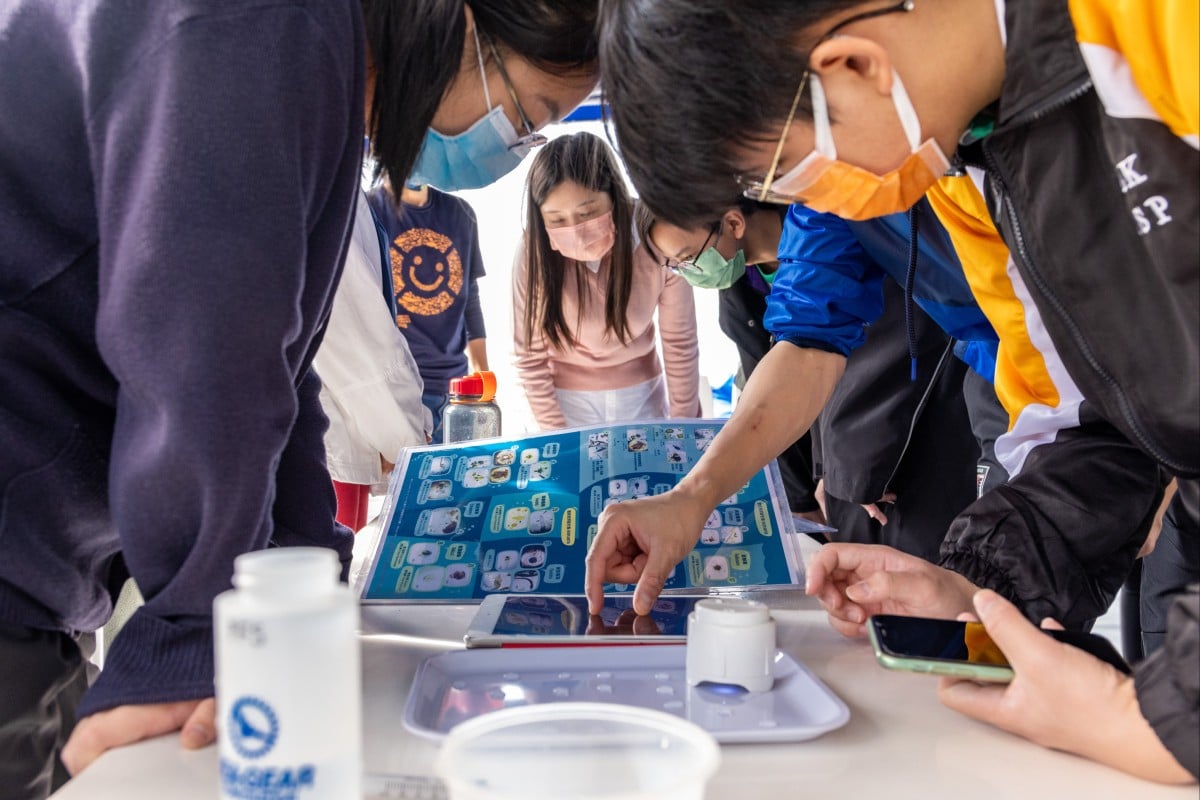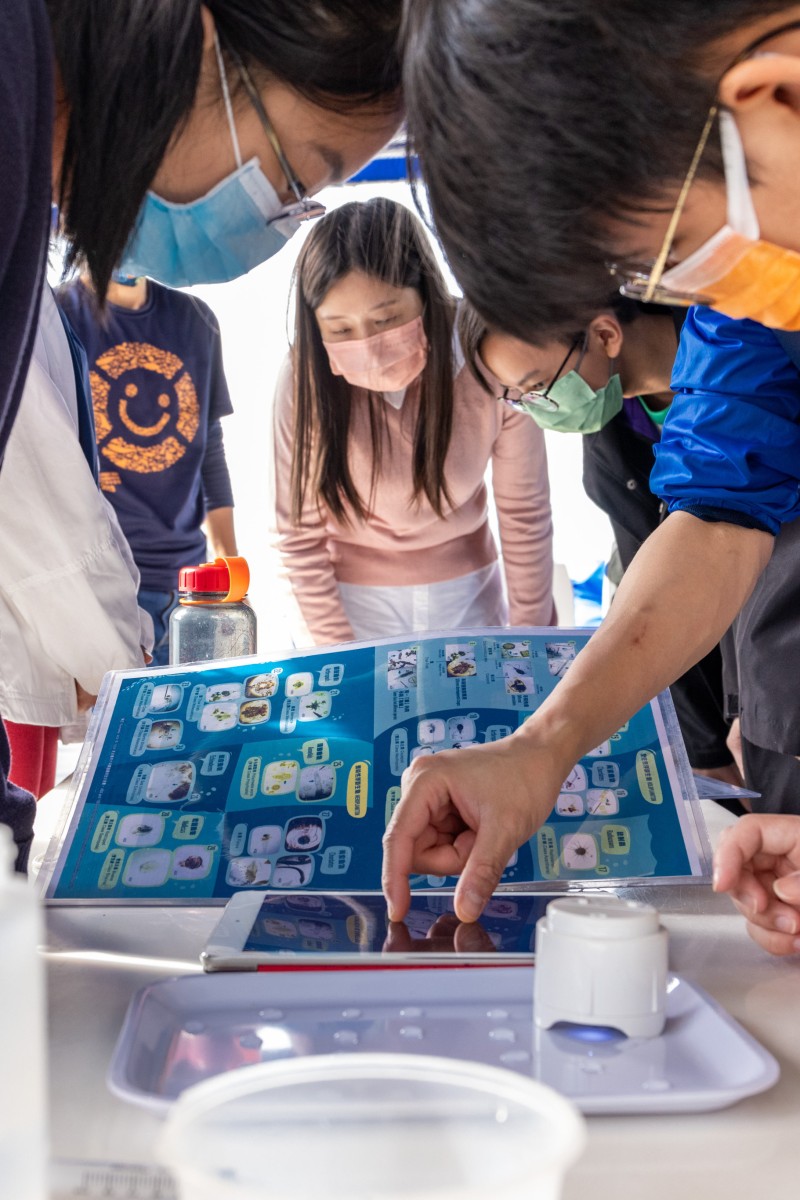- Hong Kong is home to a wide variety of marine plants and animals, but human activity, such as ‘ghost gear’, has a devastating impact on them
- Choose more sustainable seafood to be more environmentally and socially responsible, says World Wildlife Fund Hong Kong
 Students look for microorganisms in water samples during a recent harbour tour with the Clean Waterways Initiative. Photo: Handout
Students look for microorganisms in water samples during a recent harbour tour with the Clean Waterways Initiative. Photo: HandoutWritten by Charmaine Ng (Form 6, Po Leung Kuk Choi Kai Yau School)
A study by the University of Hong Kong has shown that the city is home to 5,943 species of marine fauna and flora. Have you ever considered how human activities can harm these animals and their habitats? Whether it is due to factory run off, plastic pollution or even the inappropriate disposal of waste such as fishing nets, people in Hong Kong often seem to ignore the consequences of their wasteful actions due to how disconnected they are from their natural environments.
Technology helps to rid the waterways of rubbish
One serious issue typically not recognised by Hong Kong citizens is that of ghost nets in Hong Kong’s plentiful marine habitats. World Wildlife Fund Hong Kong (WWFHK) Conservation Officer Gordon So revealed that according to a recent survey by the group, ghost gear (abandoned fishing nets, pots, lines and hooks) can be found in almost all common dive sites in Hong Kong. This includes multiple high ecological value sites and marine protected areas, such as Hoi Ha Wan.
NGOs have been fighting these issues for years – in 2020, local NGO Clean Waterways Initiative teamed up with HSBC to launch an ocean clean-up operation using specially-designed solar-powered boats to remove waste and recyclables from Hong Kong’s harbours. WWFHK has also been working closely with the Agriculture, Fisheries and Conservation Department (AFCD), collecting 268 kilograms of ghost gear between 2019 and 2020.
“WWFHK has been working closely with the AFCD and established [the] Coral Saver – Ghost Gear Monitoring Platform. This platform facilitates the reporting of ghost gear sightings and makes it easier for the AFCD to take follow-up actions,” So said.
Seafood is also a major issue for the city. Hong Kong ranks second in terms of seafood consumption per capita in Asia, yet many Hongkongers are unaware of the problems surrounding sustainability. Sustainable seafood is critically important in terms of both production and consumption.
According to WWFHK Senior Conservation Officer – Oceans, Loby Hau and Conservation Officer – Oceans, Michelle Wong, WWFHK is working with the government to increase and improve seafood labels on packaging by adding scientific names and origins, to give consumers more information on the seafood they are buying.
Adding such information would help consumers make more informed choices and continue to drive Hong Kong to becoming more sustainable in terms of the production and consumption of seafood.
Despite the many efforts of NGOs and charities like WWFHK, Clean Waterways Initiative, and Plastic Free Seas to clean up the rubbish in our rivers and oceans and guide governments to improve their policies, these efforts alone are not enough. These issues need to be dealt with at the root of the problem.
So, what can we to help? First, work on living more sustainably. The WWFHK has produced sustainable seafood guides to better educate the public about the different types of seafood being sold. Consumers should also learn to recognise sustainable seafood labels, such as those from the Marine Stewardship Council (MSC) and Aquaculture Stewardship Council (ASC), which tell consumers that products have been assessed and certified as being environmentally and socially responsible.
Furthermore, on the issue of ghost nets, report ghost gear sightings on the WWFHK’s website. Please note that WWFHK does not recommend any untrained person to carry out ghost gear retrieval operations. Finally, and most importantly, we should continue to raise awareness and educate the public and those around us about these issues and what we can do.
